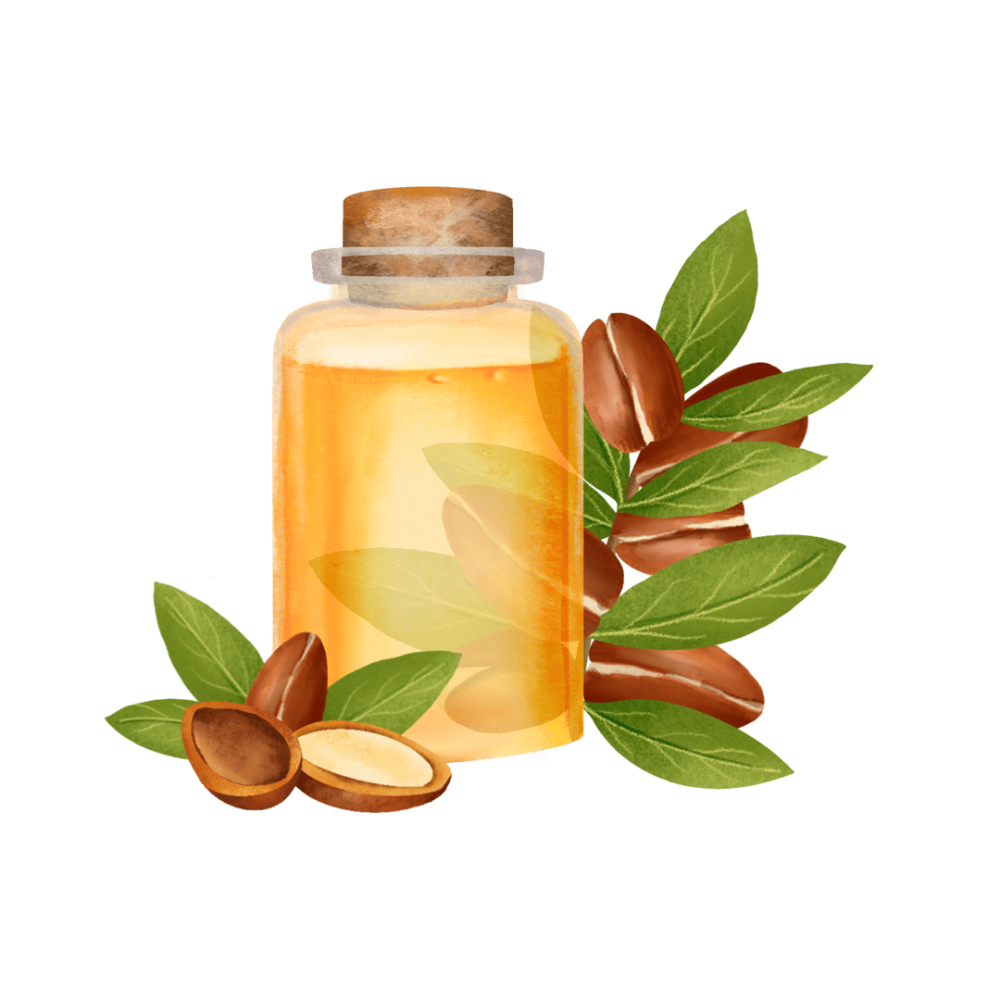Argan oil

Latin Name: Sideroxylon spinosum
Uses: culinary oil, cosmetics
What is argan oil?
Argan oil is the oil from the seed of an argan tree, a plant in the same family as sapote and shea butter (Sapotaceae). You may have seen it on the labels of shampoo bottles, but the oil is also edible. Like borscht is to Ukraine, argan oil is listed in the UNESCO Intangible Cultural Heritage of Morocco.
Why is argan oil healthy?
Argan oil is high in tocopherol (vitamin E), which is beneficial for the eyes, hair, and skin — in fact, recent research shows that argan oil be effective in preventing hyperpigmentation disorders associated with skin cancer. The healthy fatty acids found in argan oil, specifically oleic and linoleic acid, promote cardiovascular health by reducing LDL (“bad”) cholesterol and increasing HDL (“good”) cholesterol and antioxidant levels in the blood.
What does argan oil taste like?
Argan oil has a nutty, sweet flavor that makes it sought-after as a culinary oil. The high palmitic acid content of the oil helps give it a smooth and almost creamy texture. Culinary argan oil is made by cold pressing the kernels to yield a product with fruity, complex flavor similar to the way extra virgin olive oil can be grassier and spicier than regular olive oil.
How do I use argan oil?
You can use argan oil the same way you would any flavorful finishing oil (like pistachio or extra virgin olive oil). In Morocco, argan oil is an all-purpose oil traditionally eaten by dipping bread into it, drizzling it on couscous, or blending with ground almonds and honey to make a nut butter called amlou.
What does argan oil pair well with?
Because of its nutty-sweet flavor, argan oil is wonderful drizzled on mild white cheeses like burrata and halloumi; with dried figs, dates, and apricots; and peppery raw greens like arugula or cress. It’s wonderful with chocolate and its richness makes it a fabulous vegan substitute for butter in baklava. Argan oil loves North African and Ottoman spices like cinnamon, fenugreek, cumin, and coriander seed.
Where does argan oil come from?
Argan trees once grew throughout Northern Africa but is now limited to southwestern Morocco. The trees not only provide food and shelter from the searing heat, but also prevent desertification by growing deep roots that anchor soil and prevent erosion. Argan trees have played crucial in preventing the encroachment of the Sahara Desert and maintaining ecological diversity in the region.
How do I buy argan oil?
You can find culinary argan oil at gourmet and specialty foods stores, sold in a bottle just like any other food oil. It is very expensive — an 8-ounce bottle might set you back $30 to $40 — so be sure and purchase the oil from reputable markets only to ensure you aren’t paying a premium for what may actually be sunflower oil. Keep it in the refrigerator to prolong its shelf life.
Surprising argan oil fact:
Argan oil has been produced by Amazigh-speaking Berber women in the Arganeraie region since at least the 11th century. The cooperatives the women have formed are intended to preserve the traditional knowledge and practical skills needed for harvesting argan fruits, removing the seeds, and extracting the oil, as well as helping them maintain some control over the material wealth gained from producing the valuable product. As of 2020, there are around 300 small farms and women’s cooperatives producing argan oil.
